A walk on the Emmeline Pankhurst trail in Manchester.
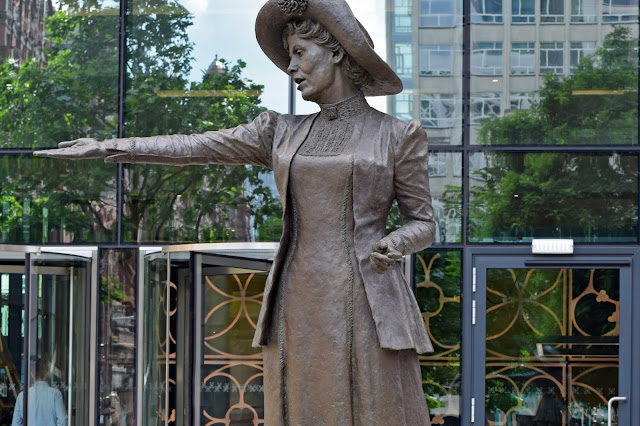 |
This 3.5 km walk takes you to three sites in Manchester that mark the life of Emmeline Pankhurst. It starts with facts at the People’s History Museum, takes you to art, in St Peter’s Square where the statue "Our Emmeline" is located.
It carries on down Oxford Road passing two of Manchester's universities and finishes at her former home and what is now the Pankhurst Centre. It includes the old banking quarter on King Street and some amazing Manchester architecture.
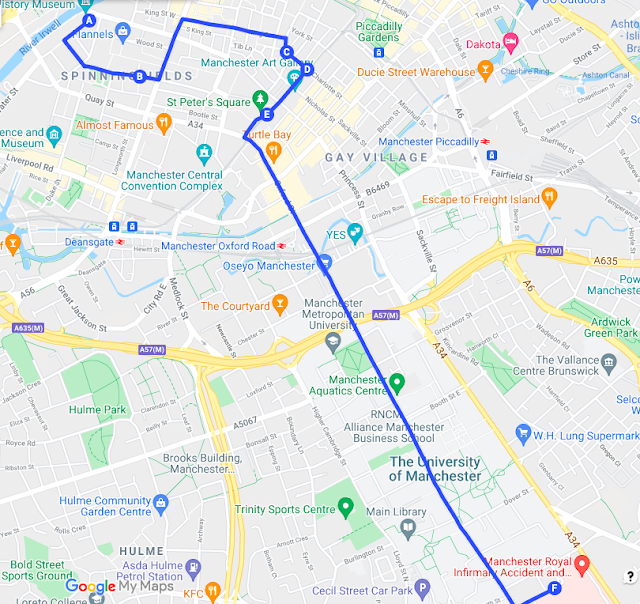 |
| Emmeline Pankhurst route (Google My Maps) |
Starting at The People's History Museum (A) turn right as you exit the museum and walk down this quiet road for around 100 metres until you see a sign above you for Left Bank.
Turn left away from the river walking past the giant lampshades of XYZ until you reach the modern architecture of Hardman Square.
As you enter the square take the left fork at a neon sign and walk past the Ivy restaurant onto Hardman Street (B)
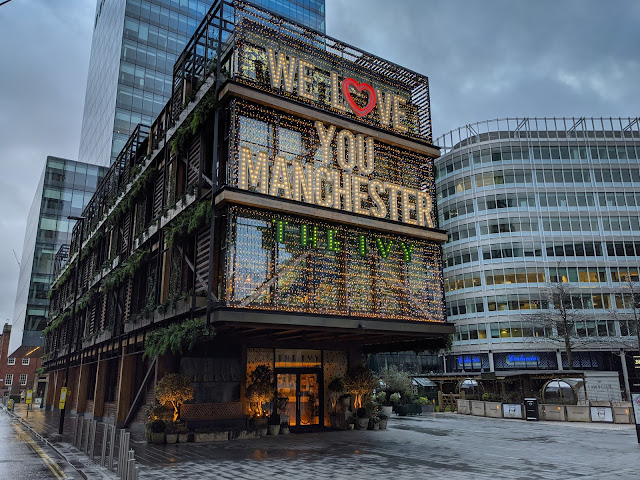 |
| The Ivy, Hardman Square |
Eventually you will reach a main road crossing your path. This is Deansgate and you will see a red post box. Turn left here and walk 230 metres down Deansgate.
You walk past the Neo-Gothic architecture of John Rylands Library on your left.
When you reach The House of Fraser department store turn right onto King Street. King Street runs through the old baking Quarter. Look out for Manchester Ship Canal House near the top of this street.
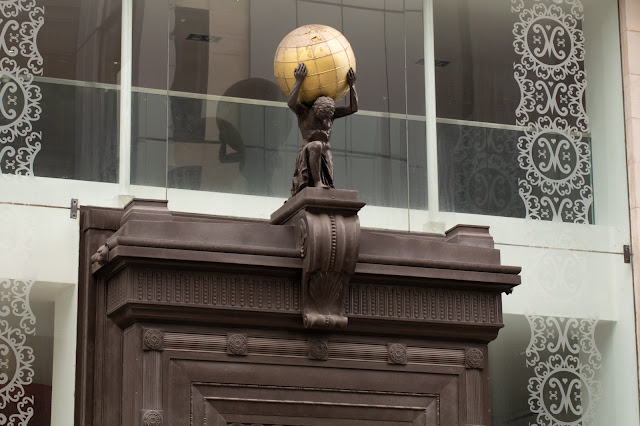 |
| Manchester Ship Canal House, King Street. |
At the end of King Street turn right into Spring Gardens and follow it round as it curves left (C). You reach Moseley Street (D) which has Metrolink tram tracks running along it. Turn right and walk along Moseley Street and you will shorty see the Art Gallery on your left hand side.
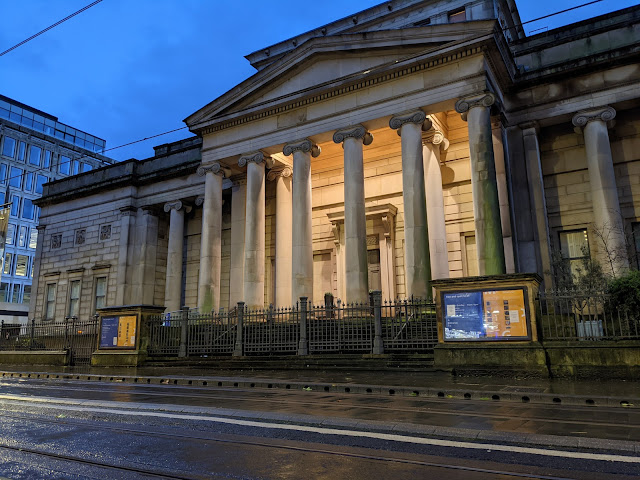 |
| Manchester Art Gallery on Moseley Street |
Walk on the gallery side of the road down Moseley Street. Enter St Peters Square (E) and walk past the Metrolink platform. The statue of Emmeline Pankhurst is on your left. St Peters Square is a good point to stop off and explore.
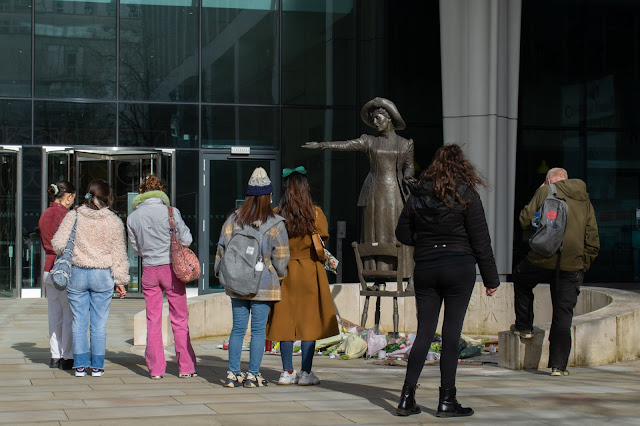 |
| Our Emmeline |
Carry on walking through the square and turn left following the traffic down Oxford Street. This becomes Oxford Road and you pass both Manchester Metropolitan University and The University of Manchester.
This is the longest part of the walk and covers 2 km but there are plenty of busses if you prefer.
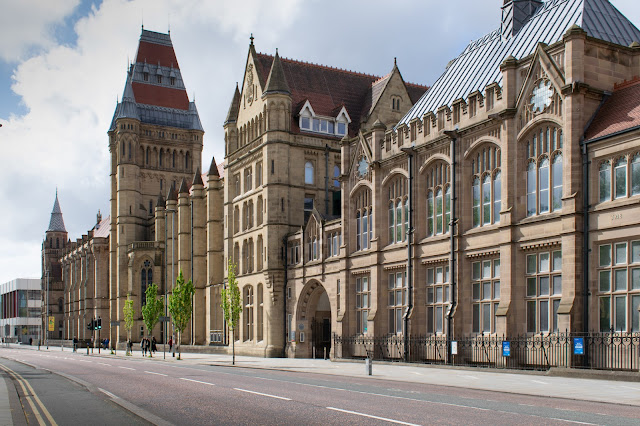 |
| Manchester University, Oxford Road |
On your left after Manchester University, you will see the Turing Tap pub. Turn left down Nelson Street at the side of this pub and you will find the Pankhurst Centre (F) on your left.
Background
The fight for democratic rights in Manchester started before Emmeline Pankhurst was born.
During the Industrial Revolution most people in the rapidly expanding area of Manchester didn’t have the right to vote.
Frustration led to a series of rallies including the Peterloo massacre of 1819. After some years The Great Reform Act of 1832 gave Manchester its first Member of Parliament.
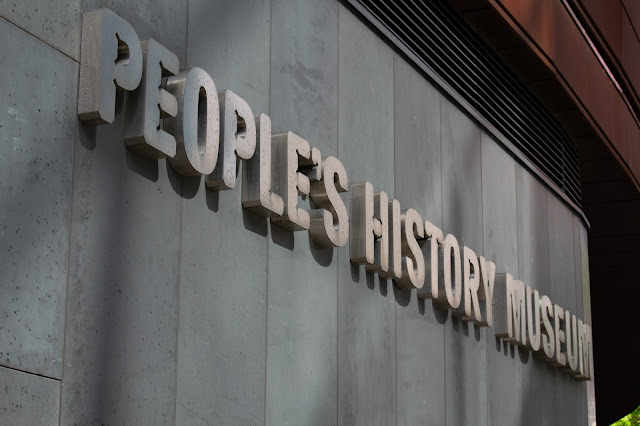 |
| People's History Museum |
Emmeline Pankhurst was born Emmeline Goulden in 1858 at Sloane Street, Alpha Terrace, Moss Side, a suburb south of the city centre. The house is no longer standing.
She married Richard Pankhurst in 1879 and moved to London in 1886.
The family returned to Manchester in 1893 and she became a member of Chorlton Board of Guardians visiting Chorlton workhouse on a regular basis. This building, formerly part of Withington Hospital has been preserved and is currently private apartments.
After the death of her husband she moved with her family to 62 Nelson Street, Manchester in 1898. This is now the Pankhurst Centre. The first meeting of the suffragettes took place in the parlour.
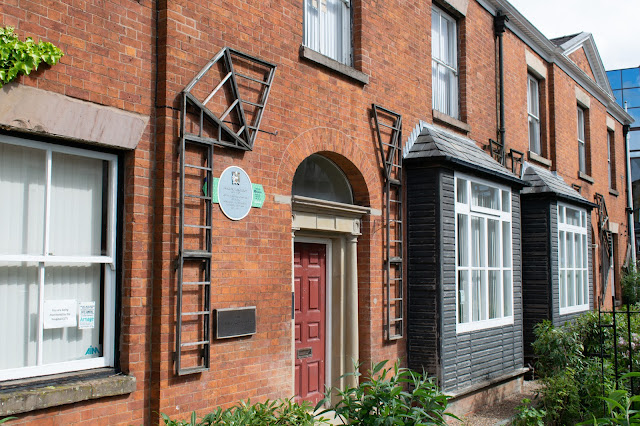 |
| Pankhurst Centre, 62 Nelson Street |
In 1903 along with her daughters she founded the Women's Social and Political Union (WSPU) with the aim of getting equal voting rights for women.
One of the highlights of the People's History Museum is the suffrage banner which appeared alongside Emmeline when she addressed 50 000 people in1908 at Heaton Park, Manchester.
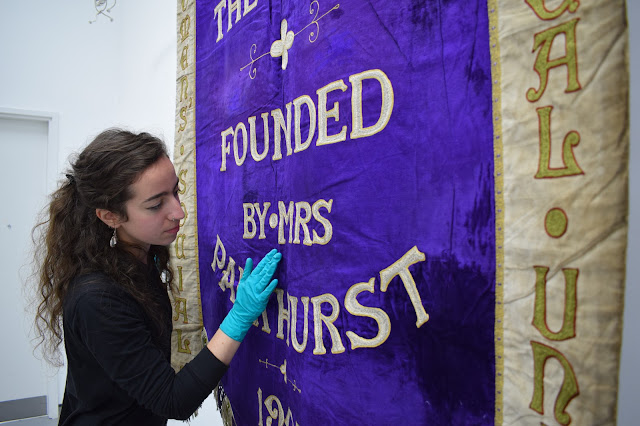 |
| Emmeline Pankhurst Banner (Courtesy People's History Museum) |
From 1906 she directed WSPU activities from London.
At the beginning of World War One Emmeline called for a suspension of the suffrage campaign and all WSPU prisoners were released to work in the factories
During the final year of the war in 1918, the Representation of the People Act was introduced, giving most women over the age of 30 the right to vote along with all men over 21 years of age, even those without property.
1928 Emmeline Pankhurst died shortly before a law was passed giving all women over 21 years of age the right to vote.
The statue in St Peter’s Square was unveiled on Friday, 14th December 2018, the 100th anniversary of women voting for the first time in a British General Election
The Pankhurst centre was restored in 1984 with a workforce of female labourers. Check the website for museum opening times. It’s on a hospital site but easy to find.
Highlights of the People's History Museum
St Peter’s Square statue About the statue
The Pankhurst Centre, 62 Nelson Street The Pankhurst Centre




Comments
Post a Comment